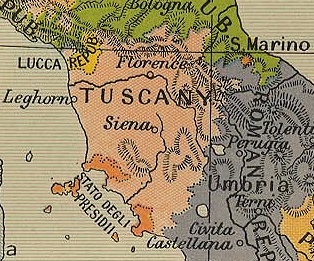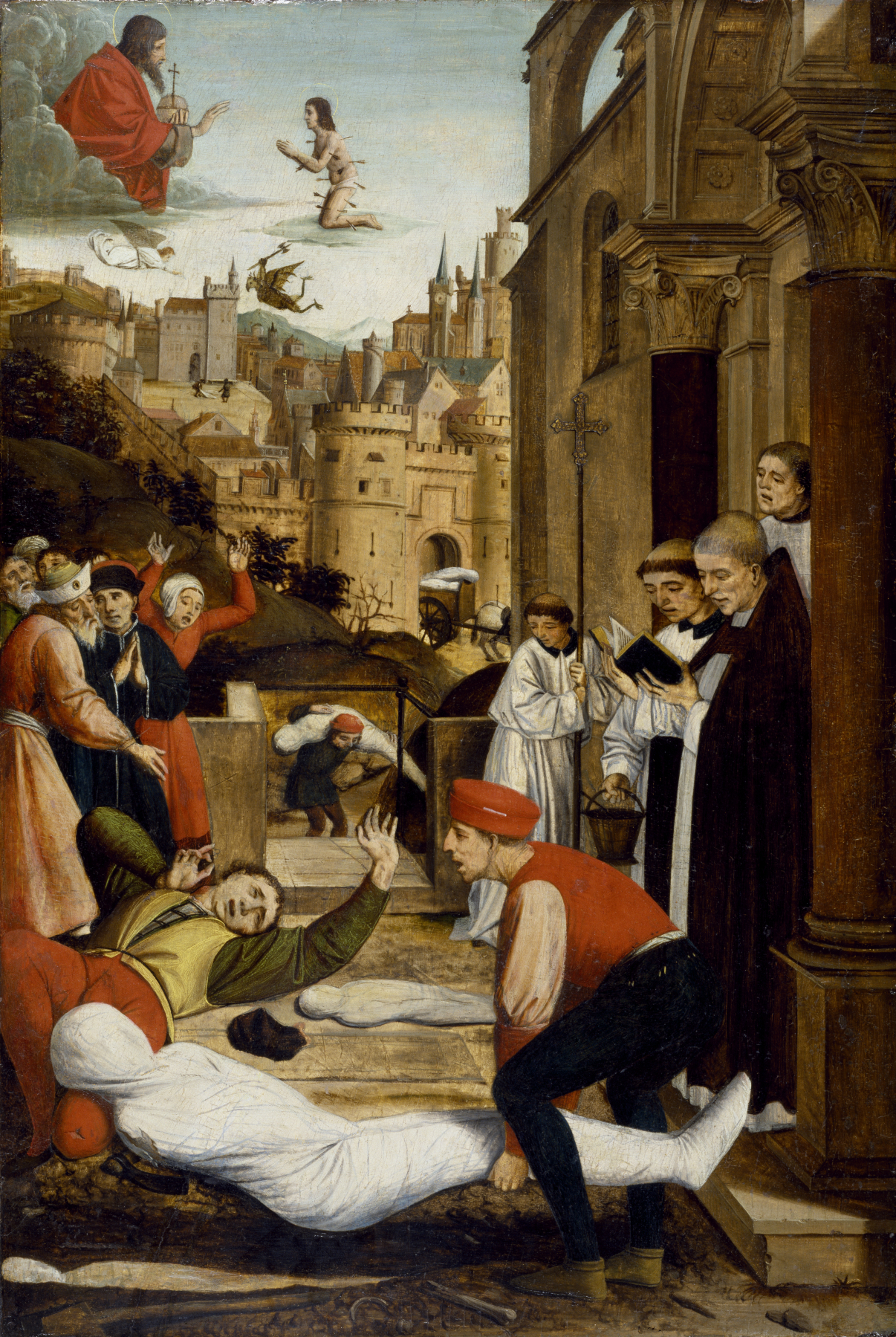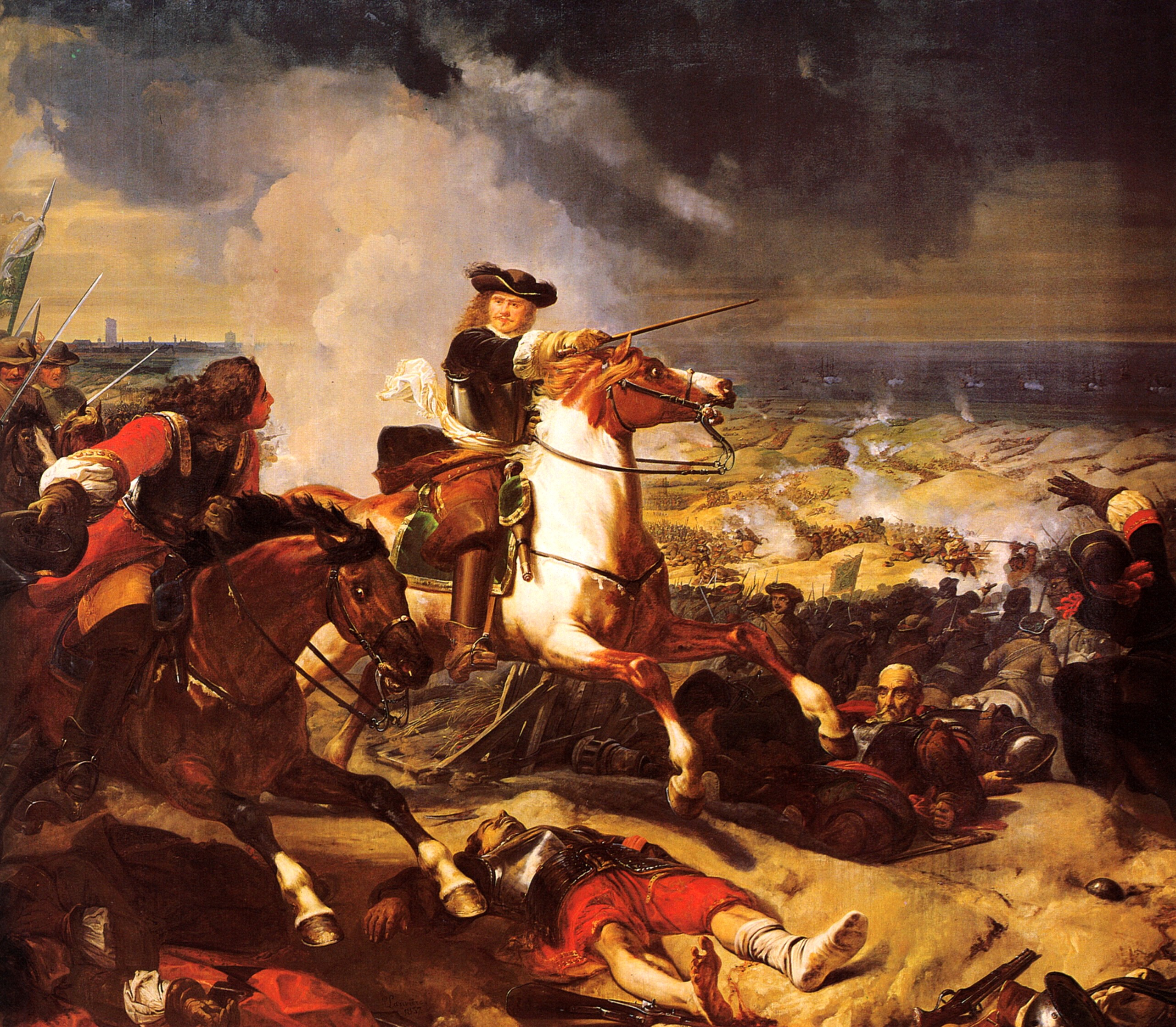|
Carignan-Salières Regiment
The Carignan-Salières Regiment was a 17th-century French military unit formed by the merging of two other regiments in 1659. Approximately 1,100 men from the regiment were sent to New France in 1665 to deal with the threat of the Iroquois to the colony. While in New France they were under the command of the Lieutenant Général of the Americas, Alexandre de Prouville de Tracy; the Governor General of New France, Governor General, Daniel de Rémy de Courcelle; and their colonel, Henri de Chastelard de Salières. The regiment constructed fortifications along the Richelieu River, and took part in three expeditions against the Iroquois in 1666. A peace settlement was reached the following year. Roughly 400 officers and soldiers remained behind in New France as settlers when the regiment returned to France in 1668. Early history The Carignan-Salières Regiment was the result of the merger of the Carignan Regiment with the Salières Regiment in 1659. The Carignan Regiment was raised in ... [...More Info...] [...Related Items...] OR: [Wikipedia] [Google] [Baidu] |
French Royal Army (1652–1830)
The French Royal Army () was the principal land force of the Kingdom of France. It served the Bourbon dynasty from the reign of Louis XIV in the mid-17th century to that of Charles X in the 19th, with an interlude from 1792 to 1814 and another during the Hundred Days in 1815. It was permanently dissolved following the July Revolution in 1830. The French Royal Army became a model for the new regimental system that was to be imitated throughout Europe from the mid-17th century onward. It was regarded as Europe's greatest military force for much of its existence. Early history The first permanent army of France, which was paid with regular wages instead of being supplied by feudal levies, was established in the early 15th century under Charles VII. It was formed due to the need for reliable troops during the Hundred Years' War, though the Army was not disbanded because it saw continued use by the Kings of France following the conflict. Upon the outbreak of a conflict, an ordonnan ... [...More Info...] [...Related Items...] OR: [Wikipedia] [Google] [Baidu] |
Battle Of Orbetello
The Battle of Orbetello, also known as the Battle of Isola del Giglio, was a major Naval battle, naval engagement of the Franco-Spanish War (1635), Franco-Spanish War of 1635. It was fought on 14 June 1646 off the Spanish-ruled town of Orbetello, on the coast of Tuscany, Italy, between a French fleet led by Jean Armand de Maillé-Brézé, Admiral Armand de Maillé, Marquis of Brézé, and a Spanish fleet commanded by Miguel de Noronha, 4th Count of Linhares sent to break the Naval blockade, blockade of Orbetello and relieve the town, besieged since 12 May by a French army under the command of Thomas Francis, Prince of Carignano, Prince Thomas of Savoy. The Battle of Orbetello was tactically very unusual, since it was fought by sailing ships towed by galleys in a light breeze. After a hard but inconclusive fight during which Admiral Brézé was killed, the French fleet withdrew to Toulon leaving the sea to the Spanish, who decided not to pursue them to relieve Orbetello. The land ... [...More Info...] [...Related Items...] OR: [Wikipedia] [Google] [Baidu] |
Pavia
Pavia ( , ; ; ; ; ) is a town and comune of south-western Lombardy, in Northern Italy, south of Milan on the lower Ticino (river), Ticino near its confluence with the Po (river), Po. It has a population of c. 73,086. The city was a major political centre in the medieval period, being the capital of the Ostrogothic Kingdom from 540 to 553, of the Kingdom of the Lombards from 572 to 774, of the Kingdom of Italy (Holy Roman Empire), Kingdom of Italy from 774 to 1024 and seat of the Visconti of Milan, Visconti court from 1365 to 1413. Pavia is the capital of the fertile province of Pavia, which is known for a variety of agricultural products, including wine, rice, cereals, and dairy products. Although there are a number of industries located in the suburbs, these tend not to disturb the peaceful atmosphere of the town. It is home to the ancient University of Pavia (founded in 1361 and recognized in 2022 by the Times Higher Education World University Rankings, Times Higher Education ... [...More Info...] [...Related Items...] OR: [Wikipedia] [Google] [Baidu] |
Battle Of The Faubourg St Antoine
The Battle of the Faubourg Saint Antoine occurred on 2 July 1652 during the Fronde rebellion in France. It is named after the Faubourg Saint-Antoine, a district near the Bastille in the east of Paris, where the battle took place. Details During the period of the Second Fronde, between 1650 and 1653, Louis, the Prince of Condé, controlled much of Paris, having allied himself with the Parliament of Paris, which was in open rebellion against the Crown. The French king, Louis XIV had only recently reached the age of majority (on 7 September 1651), and Condé still claimed that the nefarious influence of Cardinal Mazarin rendered him incapable of rule. On 2 July 1652, the battle of the Faubourg St Antoine took place just outside the Bastille. Condé had sallied out of Paris to prevent the advance of the royalist forces under the command of Turenne. Condé's forces became trapped against the city walls and the Porte St Antoine, which the Parliament refused to open; he was coming unde ... [...More Info...] [...Related Items...] OR: [Wikipedia] [Google] [Baidu] |
Henri De La Tour D'Auvergne, Viscount Of Turenne
Henri de La Tour d'Auvergne, vicomte de Turenne (11 September 161127 July 1675), commonly known as Turenne (), was a French general and one of only six Marshal of France, marshals to have been promoted Marshal General of France. The most illustrious member of the La Tour d'Auvergne family, his military exploits over his five-decade career earned him a reputation as one of the greatest military commanders in history. Born to a Huguenot family, the son of a Henri de La Tour d'Auvergne, Duke of Bouillon, Marshal of France, he was introduced to the art of war at a young age. He first served as a volunteer in the Dutch States Army under the orders of his maternal uncles Maurice of Nassau and Frederick Henry, Prince of Orange, Frederick Henry before pursuing his career in the service of France, where his noble origins and proven qualities soon saw him rise to the top of the military hierarchy. He rose to prominence during the Thirty Years' War by Battle of Breisach, capturing the for ... [...More Info...] [...Related Items...] OR: [Wikipedia] [Google] [Baidu] |
Guyenne
Guyenne or Guienne ( , ; ) was an old French province which corresponded roughly to the Roman province of '' Aquitania Secunda'' and the Catholic archdiocese of Bordeaux. Name The name "Guyenne" comes from ''Aguyenne'', a popular transformation of ''Aquitania''. In the 12th century it formed, along with Gascony, the duchy of Aquitaine, which passed under the dominion of the kings of England by the marriage of Eleanor of Aquitaine to Henry II. History In the 13th century, as a result of the conquests of Philip II, Louis VIII and Louis IX, Guyenne was confined within the narrower limits fixed by the 1259 Treaty of Paris and became distinct from Aquitaine. Guyenne then comprised the Bordelais (the old countship of Bordeaux), the Bazadais, part of Périgord, Limousin, Quercy and Rouergue, and the Agenais ceded by Philip III to Edward I in the 1279 Treaty of Amiens. Still united with Gascony, it formed a duchy extending from the Charente River to the Pyrenees ... [...More Info...] [...Related Items...] OR: [Wikipedia] [Google] [Baidu] |
Alps
The Alps () are some of the highest and most extensive mountain ranges in Europe, stretching approximately across eight Alpine countries (from west to east): Monaco, France, Switzerland, Italy, Liechtenstein, Germany, Austria and Slovenia. The Alpine arch extends from Nice on the western Mediterranean Sea, Mediterranean to Trieste on the Adriatic Sea, Adriatic and Vienna at the beginning of the Pannonian Basin. The mountains were formed over tens of millions of years as the African and Eurasian tectonic plates collided. Extreme shortening caused by the event resulted in marine sedimentary rocks rising by thrust fault, thrusting and Fold (geology), folding into high mountain peaks such as Mont Blanc and the Matterhorn. Mont Blanc spans the French–Italian border, and at is the highest mountain in the Alps. The Alpine region area contains 82 peaks higher than List of Alpine four-thousanders, . The altitude and size of the range affect the climate in Europe; in the mountain ... [...More Info...] [...Related Items...] OR: [Wikipedia] [Google] [Baidu] |
Fronde
The Fronde () was a series of civil wars in the Kingdom of France between 1648 and 1653, occurring in the midst of the Franco-Spanish War, which had begun in 1635. The government of the young King Louis XIV confronted the combined opposition of the princes, the nobility, the noble regional court assemblies (''parlements''), as well as much of the French population, and managed to subdue them all. The dispute started when the government of France issued seven fiscal edicts, six of which were to increase taxation. The ''parlements'' resisted, questioned the constitutionality of the king's actions, and sought to check his powers. The Fronde was divided into two campaigns, the Parlementary Fronde and the Fronde of the Princes. The timing of the outbreak of the Parlementary Fronde, directly after the Peace of Westphalia (1648) that ended the Thirty Years' War, was significant. The nuclei of the armed bands that terrorized parts of France under aristocratic leaders during that peri ... [...More Info...] [...Related Items...] OR: [Wikipedia] [Google] [Baidu] |
Monte Argentario
Monte Argentario is a ''comune'' (municipality) and a peninsula belonging to the Province of Grosseto in the Italian region Tuscany, located about south of Florence and about south of Grosseto. The peninsula is connected with the mainland by three spits of land which form two lagoons, the ''Laguna di Ponente'' on the west side and the ''Laguna di Levante'' on the east side of the middle dam. The two main villages on Monte Argentario are Porto Santo Stefano, chief town, facing north, and Porto Ercole facing south. The panoramic road ''Strada panoramica'' starts in Porto Santo Stefano allowing splendid views of the coast and the Tuscan Archipelago. Monte Argentario borders the ''comune'' of Orbetello, which is located on the middle dam between the two lagoons. Geography Monte Argentario is a promontory stretching towards the Tyrrhenian Sea in correspondence of the two southernmost islands of the Tuscan Archipelago, Giglio and Giannutri. The promontory was an island in the ... [...More Info...] [...Related Items...] OR: [Wikipedia] [Google] [Baidu] |
Talamone
Talamone (, ) is a town in Tuscany, on the west coast of central Italy, administratively a frazione of the comune of Orbetello, province of Grosseto, in the Tuscan Maremma. Talamone is easily reached from Via Aurelia, and is about from Grosseto and from Orbetello. Geography The village lies on a rocky promontory, which lies on the southern border of the Maremma nature reserve, in a dominant position along the whole stretch of coast arriving at Monte Argentario, Mount Argentario. The surrounding area is characterized by the presence of vegetation typical of Mediterranean Sea, Mediterranean scrub and long sandy beaches, lined by pine trees. History According to Diodorus Siculus, the town was by the Argonauts named after the hero Telamon. However, this etymology is likely a mythological fabrication. It was an ancient and flourishing city already during the Etruscans, Etruscan period. It was the site of the Battle of Telamon in 225 BC between Roman and the Celtic armies. A ... [...More Info...] [...Related Items...] OR: [Wikipedia] [Google] [Baidu] |
Jean Armand De Maillé, 2nd Marquis Of Brézé
Jean Armand de Maillé, 2nd Marquis of Brézé, Duke of Fronsac (18 October 1619 – 16 June 1646) was a French admiral. Early life Jean was born in Milly-le-Meugon, in one of the most powerful French families of the time; his father was Urbain de Maillé, Marquis of Brézé, Marshal of France, and Nicole du Plessis. His uncle was Cardinal Richelieu, King Louis XIII's renowned minister, and his brother-in-law, Louis de Bourbon, Prince of Condé, (better known as the ''le Grand Condé''), was the First Prince of the Blood. Career Thanks to his uncle, at the age of seventeen, Jean received the title of ''grand-maître de la navigation'' (Grand-master of Navigation), a new title created by King Louis XIII for Cardinal Richelieu and equivalent to Grand Admiral of France. One of the leading figures in the Eighty Years' War, Jean won a victory at the battle of Cadiz near Cadiz (20 July 1640), and then seized Villafranca. In 1641, he arrived in Portugal to help in the Portugues ... [...More Info...] [...Related Items...] OR: [Wikipedia] [Google] [Baidu] |





